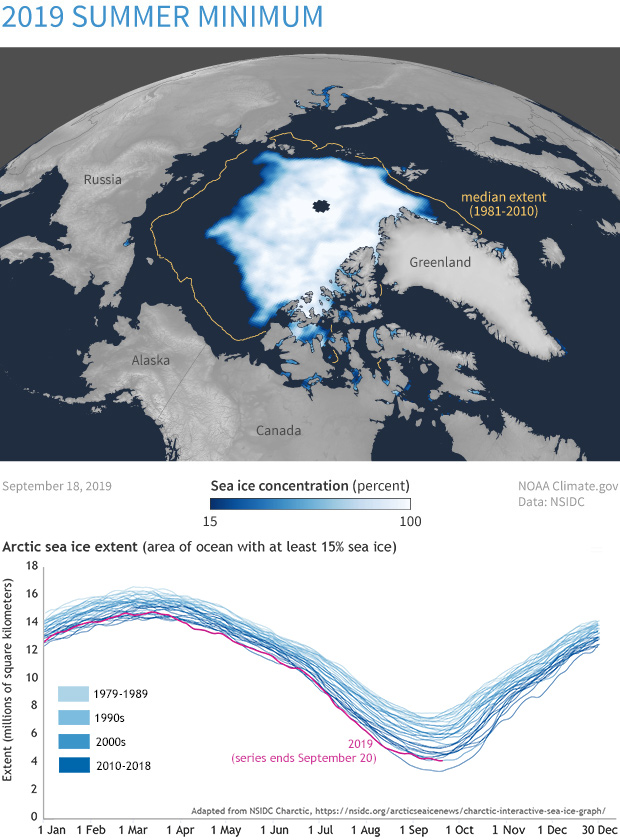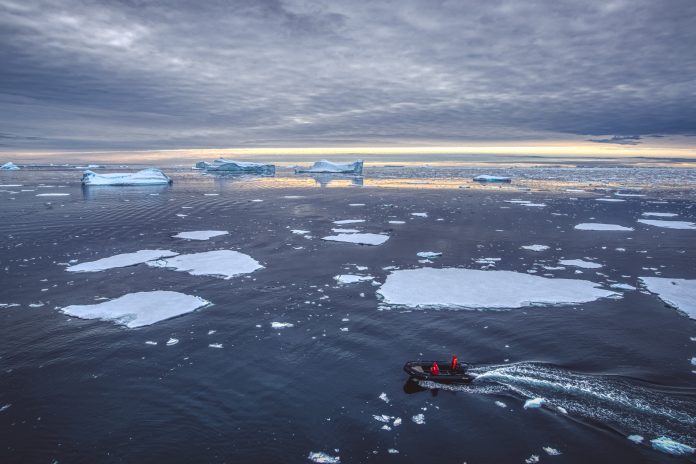The Arctic is melting faster than even the most drastic predictions: A new study predicts the Arctic could be free of sea ice by 2035
A new study, published in the journal Nature Climate Change, uses a new and improved model based on the last interglacial period to suggest that shallow pools of rain and melt water could lead to the Arctic being free of sea ice as early as 2035.
Every year Arctic sea ice fluctuates with the seasons, it expands as the sea surface freezes during the winter months, covering nearly the entire Arctic Ocean, around 6 million sq m. It then melts in the summer months, reaching its lowest point in September.
Over the decades, the extent of Arctic sea ice has been rapidly declining. In the summer of the 1980s, ice covered an approximately 3.8 million sq m, however this summer, sea ice covered only around 2.8 million sq m.

During the last interglacial period, around 127,000 years ago, there were high temperatures in the Arctic which has puzzled scientists for decades. Until now, computer models have not been able to simulate the warmest temperatures during the last interglacial.
But now the the UK Met Office’s Hadley Centre climate model has enabled researchers to compare Arctic sea ice conditions during the last interglacial with present day. Their findings are important for improving predictions of future sea ice change.
Previous projections from the Intergovernmental Panel on Climate Change (IPCC) show summer sea ice persisting over a million sq km until at least 2050 or even beyond 2100, but recently, that timeline has begun to look far too optimistic.
The impact of melt-ponds
The new Hadley Centre model takes into account ‘melt ponds’ which are shallow pools of water that form on the surface of Arctic sea ice during spring and summer months. The melt ponds are important for determining how much sunlight is absorbed by the ice and how much is reflected back into space.
Some studies have shown that melt ponds can enhance surrounding melting ice and increase phytoplankton blooms in the ocean underneath. It can also make Arctic sea ice unsteadier and lead to fractures, revealing the ocean underneath and contributing to further heat absorption.
Using the model to look at Arctic sea ice during the last interglacial, the team concludes that the impact of intense springtime sunshine created many melt ponds, which played a crucial role in sea-ice melt.
A simulation of the future using the same model indicates that the Arctic may be free of sea ice by 2035.
Maria Vittoria Guarino, earth system modeller at British Antarctic Survey (BAS), said: “High temperatures in the Arctic have puzzled scientists for decades. Unravelling this mystery was technically and scientifically challenging. For the first time, we can begin to see how the Arctic became free of sea ice during the last interglacial. The advances made in climate modelling means that we can create a more accurate simulation of the Earth’s past climate, which, in turn gives us greater confidence in model predictions for the future.”
Louise Sime, the group head of the Palaeoclimate group, added: “We know the Arctic is undergoing significant changes as our planet warms. By understanding what happened during Earth’s last warm period we are in a better position to understand what will happen in the future. The prospect of loss of sea ice by 2035 should really be focussing all our minds on achieving a low-carbon world as soon as humanly feasible.”
The study can be found here.











